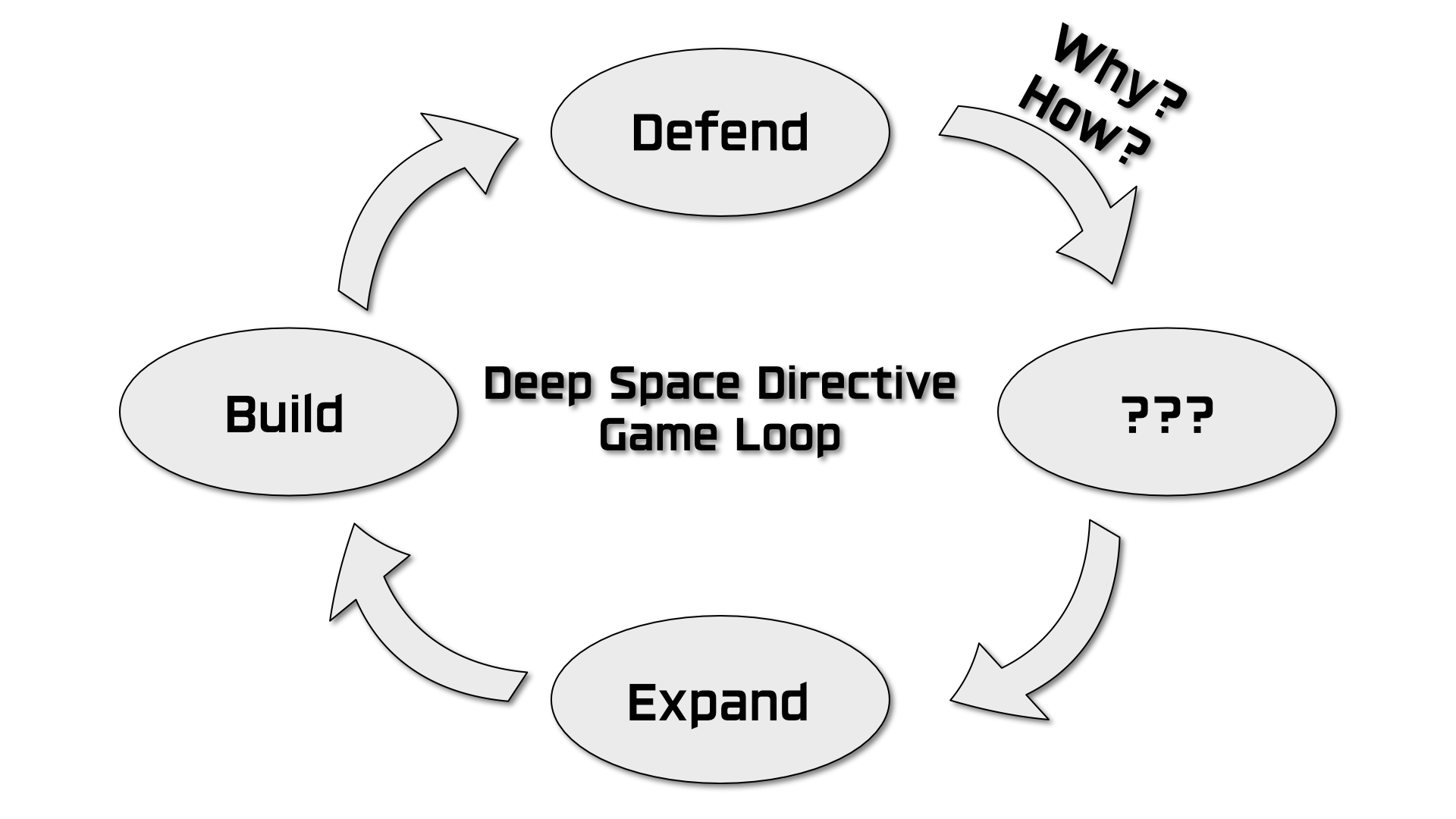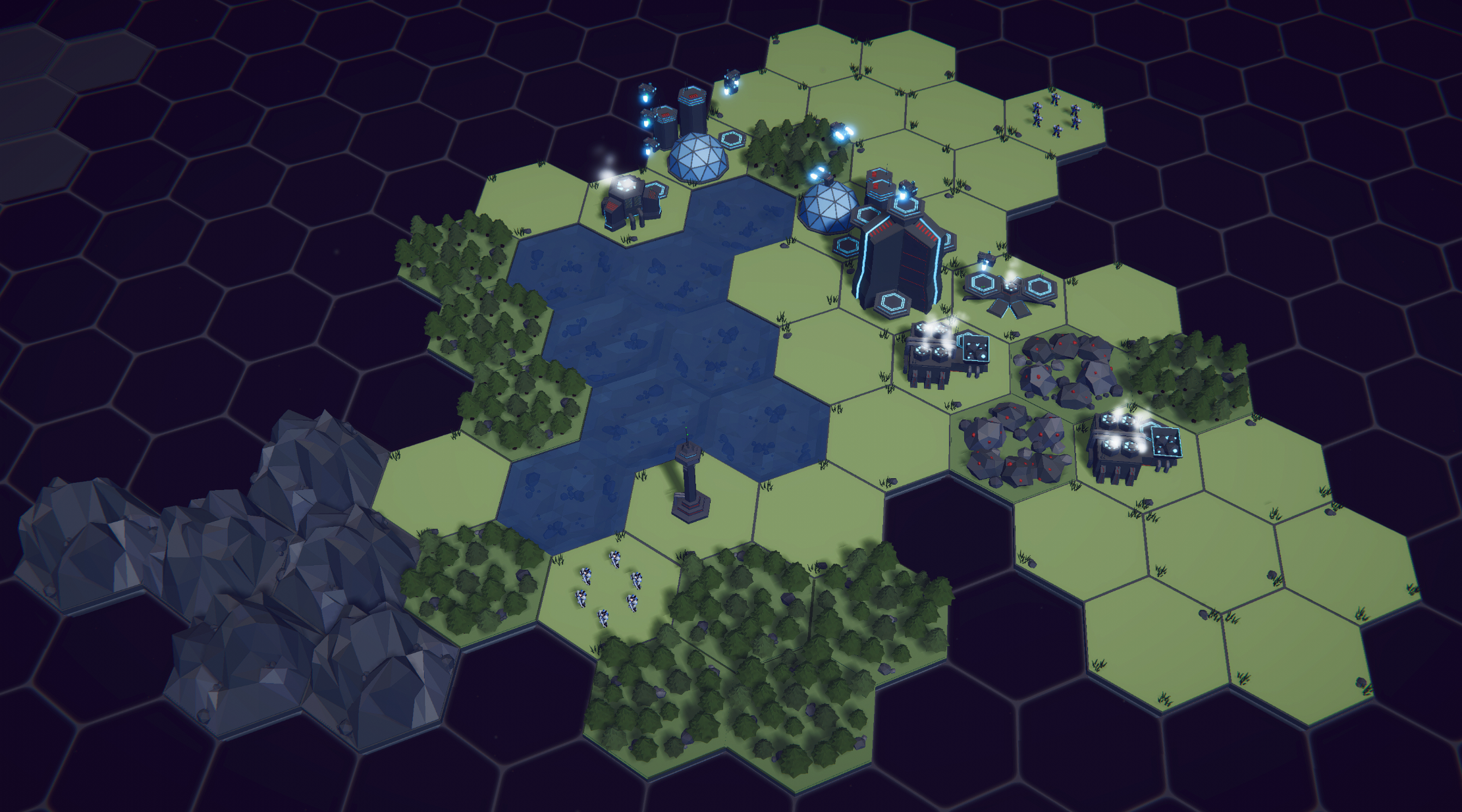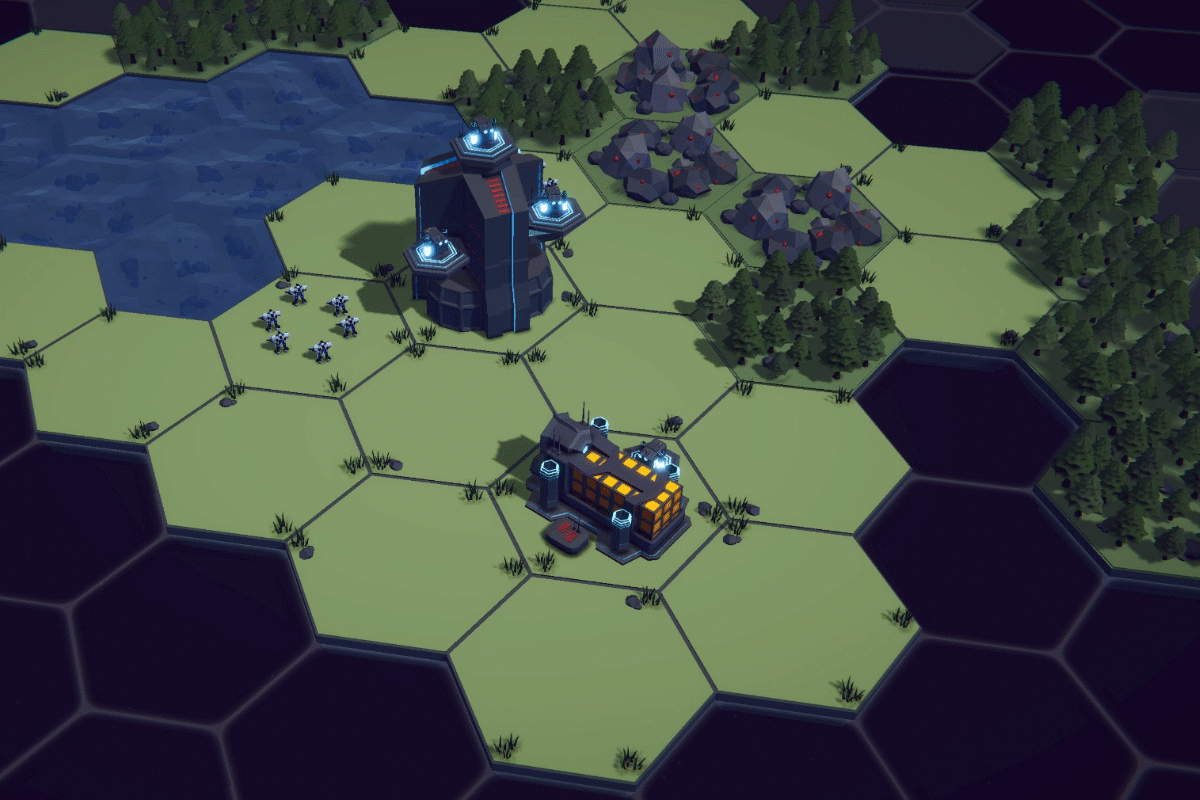Minute 5 to Minute 10 - Completing the Game Loop
So here I am making another Dev Log post on my project Deep Space Directive and I’ve made a ton of progress! Placeholder art is gone, bugs have been squashed, a tile-based fog of war has been added, a Steam store page is up and running, and so many other small details are getting polished. It’s starting to look and feel like a real game!
With any game project I’ve ever worked on there are successes and challenges. And to be honest one of the things I love most about making games is the creative problem-solving process. The problem-solving space is SO BIG. I love it. There are so many ways to solve a given problem. Some good, some bad, and those rare rainbow unicorn solutions that make everything better.
Which brings me to the topic of this post! I’ve been working to complete the game loop for Deep Space Directive - all with the goal of releasing a demo and starting to get some feedback. I’ve been searching for one of those rare solutions that solves multiple problems and adds to the player experience.
And I think I’ve found it.
But first! Let’s rewind a bit so you know where I started.
Game Loop
The first half of the game loop is working. The player is guided through adding the basic buildings and when that’s done the first wave of enemies spawns. But after that, we start to run into problems. Why should the player continue? And what should they continue to do? They’re kind of left hanging…
Check out that amazing graphic!
I know, this all sounds pretty basic and like things I should have planned out earlier. Maybe I should have but I didn’t and frankly I like letting the design evolve somewhat organically. I had an overall vision and plan for the game, but I knew the details would get challenged once I could play the game and I’d need to tweak, adjust, or scrap ideas altogether in order to make the game fun.
Or at least, this is my current rationalization for not seeing these problems when I was first planning the game.
Taking a Few Steps Back
One of the original design pillars of the game was to allow the player to build and shape the world around them. So I wanted to make the starting landmass small to create a need for the player to expand the terrain. But to build land you need the resources dropped by the enemy and the enemy only spawns at night. Which means you have to wait to kill the enemy and collect the resources.
You might see where I’m going with this… It adds up to a slow start to the game. Which isn’t a great way to engage new players! So, I came up with a few solutions.
Option 1: Increase the drop rate of the land-building resource.
Option 2: Spawn more enemies.
Option 3: Give the player more to do by making more buildings available at the start of the game.
Any of these solutions solve the problem now but would cause a bigger design problem down the road.
Increasing the drop rate makes for resource inflation. Enemy waves will get substantially bigger and the amount of land-building resources will scale with those larger waves. Spawning more enemies does the exact same thing. Making more buildings available at the beginning of the game takes a lot of development time and reduces the amount the player gets to earn or unlock later in the game.
This is why I was stuck. I had three options. None of them solved the problem in a good way.
More Problems
Which brings up yet another problem that I’ve been trying to solve. With a small initial starting landmass, it's easy to put buildings in the "wrong" place and block the "correct" placement of other buildings.
Putting solar panels near water seems like a perfectly reasonable thing to do! But then it comes time to place the water pump which MUST be placed next to water. With limited waterfront real estate it’s really easy to run out of building locations.
I don’t want to hold the player’s hand too much, but this kind of mistake early on would be more than frustrating and a really good reason to quit and try a different game.
It looks Nice, but where does the water pump get built?
Maybe this all sounds bad like a failed project, but these issues are so central to the game being fun, to me it seems reasonable to spend a lot of time trying to solve these problems. Again, despite what might appear as complaining, what I see is a challenge and problem to solve! And I love that!
Moving Forward
When I get stuck or am hyper-focused on a particular problem, I’ve learned to take a step back, get a different perspective, and ask myself a few questions.
What is the real problem? What is it that I’m actually trying to achieve? Is there a bigger overarching problem, that if solved would solve this problem too?
In this case, what I want is for the player to continue to build their base with their current level of tech. But there's no space to build. Not to mention that the player doesn’t have any motivation to continue building. Nothing is asking for more food or more metal ore. Things are good. So why would the player do anything?
When it comes to solving problems, I’m a pretty firm believer that more isn’t better. More tech. More content. More code. Those things don’t necessarily make for a better game. Better is better.
I’ve also often found that multiple problems can often be solved by a single good choice or design decision. And it’s that rare unicorn solution that I’m so determined to find!
Solving Initial Building Placement
Of course, as always, there’s more than one solution to any given problem. My first thought to solve the building placement was to add in some helper system for the player to show where they should or shouldn’t put the building - some nice visual overlay as the player is adding buildings. This could add some polish and solve one of the problems, but It doesn’t solve the larger pacing problem of what the player should do after the first wave of enemies.
This solution also feels like feature creep… One more manager. One more system to create, debug, and maintain. It sets off internal mental warnings that I’m trying to solve a problem by doing more not being better.
And! Real the issue is less about the player knowing exactly where to put the buildings and more about the player easily blocking the few positions near resources early in the game.
Realizing this was a breakthrough.
So! Why not surround the water and metal ore with buildable grass tiles? When this dawned on me I couldn’t believe how simple it was. Both in terms of the idea itself and the implementation. A couple of lines of code to create a new coroutine and it works!
Problem solved! I love it when this happens.
Once again, simple beats complex! Not only can the player not realistically screw up the placement of the first few buildings - they now have more land and more area to expand and build. This also turns out to be a partial solution to the problem that started this whole post - completing the game loop.
Look at all that lake front real estate!
This small amount of added land means there is now room to expand after that first wave of enemies. There’s room for more mines, more water pumps more everything. I love simple solutions like this. This is exactly what I was looking for!
Still, Need to Complete the Game Loop
Alright, the player now has space to expand and build, but why? Why would they do that? The game loop still isn’t complete. There needs to be something more. Something for the player to accomplish.
The main goal or directive (see what I did there!) of the game is to explore and exploit the resources of a given world and ship those resources off-world. So it totally makes sense that this is how I complete the game loop.
In game design terms, we need a resource “sink.” This creates a demand for resources and consumes those resources. Now, at a cynical level, this is just a fancy fetch quest, which is frankly what a lot of base-building games are - albeit pretty elaborate fetch quests.
So! I give you the final piece of the game loop… The supply ship!
Precious resources will be collected and shipped off-world to make your corporate overlords happy or maybe to support a global war effort - I still need to fine-tune the theming. I’m definitely leaning toward the corporate idea.
Maybe this all sounds obvious. But it feels so good to have the loop complete. It’s a massive step forward in being able to release a demo.
What’s Next?
Well, what gets shipped off-world needs to be more than just a counter or slider that appears on the screen and slowly increments toward completion. I want it to be meaningful to the player and to do that there needs to be some type of reward connected to completing the directive.
And this is what I’m currently working on. It might be as simple as choosing directives (and rewards) from a list or it might get integrated into a tech-tree-like approach. I’m not sure what will feel best as a player. I might also use one solution for the demo and another for the full game… We’ll just have to wait and see what happens.





